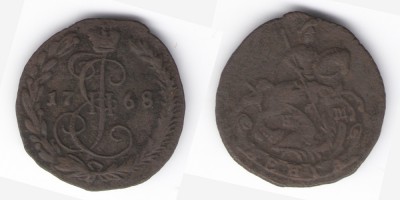Maltese tari
The sovereign Military order of Malta minted in 1768 a silver coin with a nominal value of 4 tari. For the first time these banknotes began to produce southern Italy in the X century, first of gold, then of silver. The weight was 1/30 oz: 0.883 g. the Origin of the name of the coin is not reliably established, it is assumed that the source is the Arabic coin dirham.tari were minted, in imitation of the Arabic coins of the Fatimid Caliphate, with Kufic inscriptions. The legend and inscriptions were executed by the Kufic font. This handwriting was invented by the Arabs in order to rewrite and distribute quotations from the Koran. Kufic style has a specific design, clear geometric proportions, and the size of lines and letters.
The order of Malta began minting silver tari in 1530. According to the monetary system of that time, 1 tari corresponded to 1/12 scudo. Monetary units 1, 2 tari were produced from silver and copper. Tari, face value 3, 4, 6, 8, 15, 16, 30 – only silver. Coinage was made until the end of the XVIII century.
The money sign 4 tari, which the order of Malta minted in 1768, is issued by the bust of the ruler, in armor. On the front side of the tari – portrait of Manuel Pinto de Fonseca, Grand Master (Master) of the order, who has the title of Supreme leader. In the circular inscription: name of Manuel Pinto, bottom: year of manufacture. On the reverse side there is a heraldic shield, at the top – a crown, above it is applied the Maltese cross. The shield consists of four parts. In the upper left and lower right - a cross. The other two bear the arms of the Master himself. The coat of arms depicts five crescents, which represent the fact that the family of Manuel Pinto won five victories in the battles with the Ottomans. The shield is decorated. On one side of the shield, marked the letter "T", the initial letter of the name of the coin, on the other – 4, denomination.
Showing 1 to 1 of 1 (1 Pages)
 Russian
Russian English
English Deutsch
Deutsch Spanish
Spanish Português
Português


